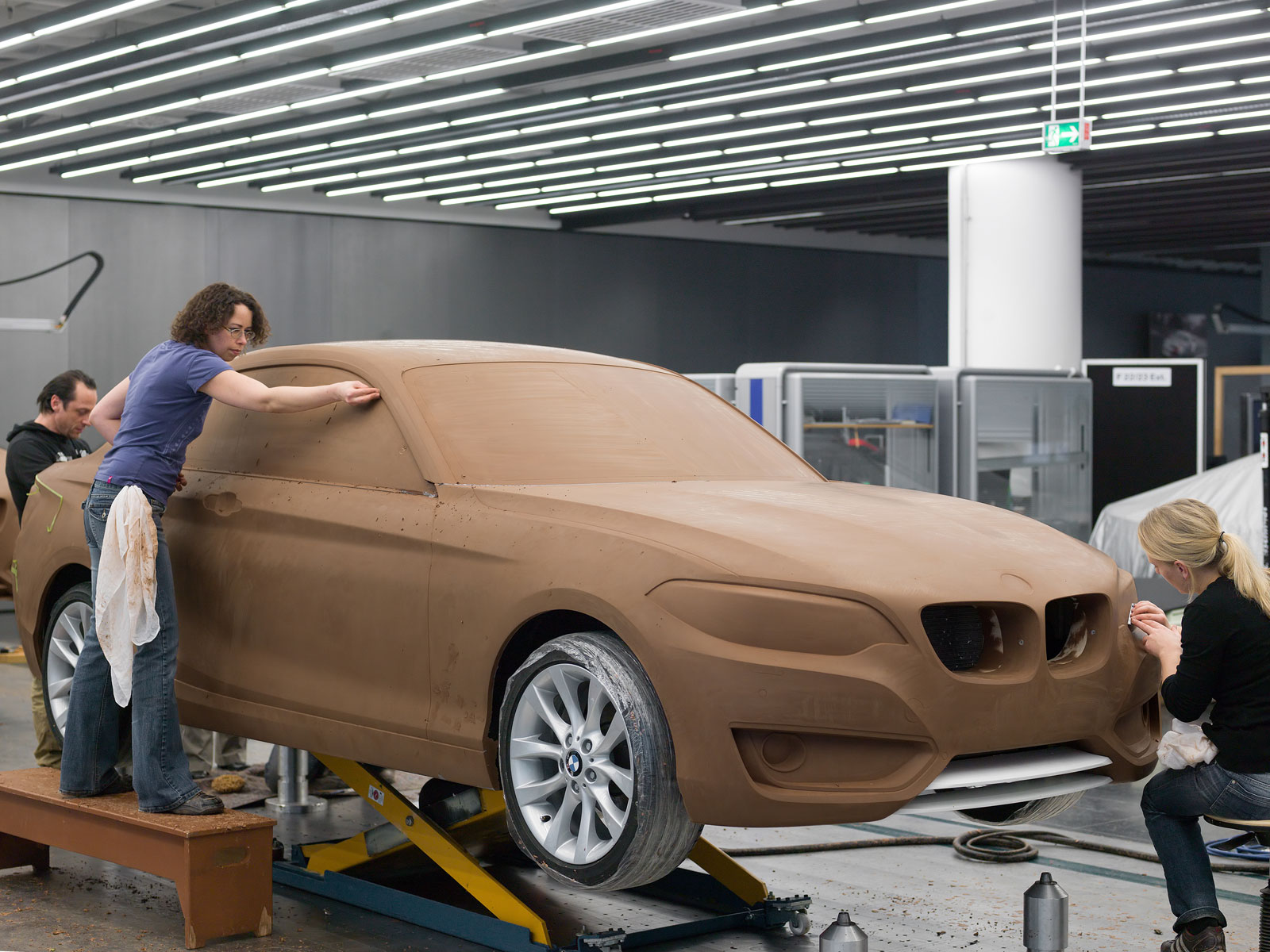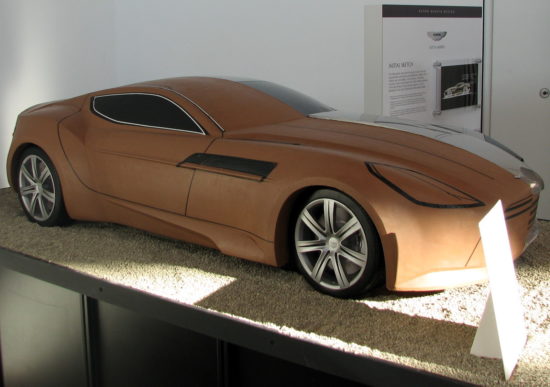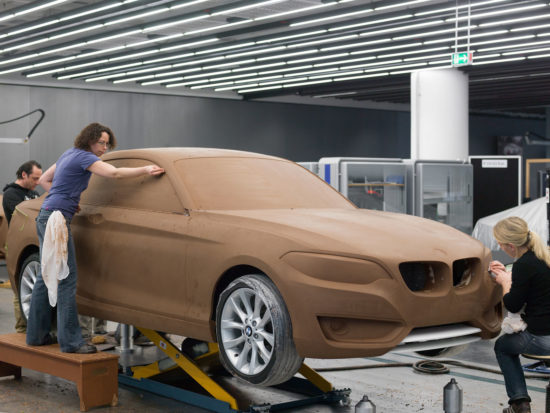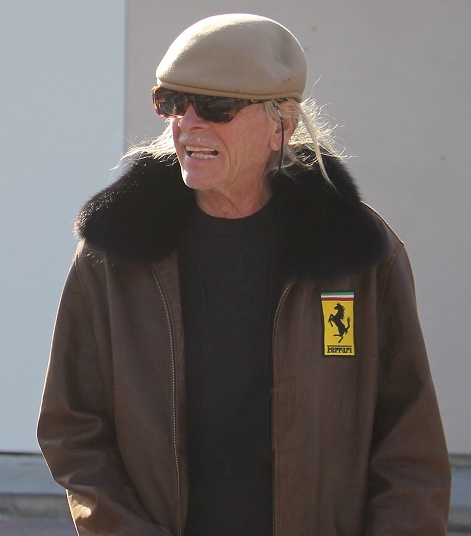by Wallace Wyss –
When Harley Earl, the first designer hired by General Motors, was a little boy in Pasadena, CA he played in the (almost) dry clay riverbed, whipping up car designs. When he and his father made a name for themselves restyling cars for movie stars, GM thought he was what they needed and hired him to come to Detroit where he was their first director of styling (he called the group the “art and color section.”)
The way Harley saw it was vastly different than the first Henry Ford. Ford made products like the Model T with no thought of merchandising it though styling while to Harley styling was nearly the whole appeal. So Harley instituted clay models as a way of envisioning a future design before they went to wood models (life size) and to metal die and stampings.
For some reason the wood models don’t get much publicity but I remember in the ’50s running across one in a neighbor’s garage–its surfacing was very exact as it was used to guide the creation of the metal stampings. Eventually they sourced a material called Di-Noc, which comes in various colors and finishes. With that you could cover the clay model and, from a distance of say, 10 ft. it looked like a finished car except the windows were blacked out.
Then later on the next step was to add windows but the rest of the car’s innards would be hidden by flat black covering. They either hadn’t designed it yet or wanted to get approval on the exterior before they mocked up an interior. The next big step added, probably in the ’80s or ’90s, was robot carving–you tell a computer to do it and it mills the clay into the rough form in a few minutes and then humans go and start shaping it by hand.
All the modern stuff, like computers, specialized design software, giant monitors that show the shape evolving, large-scale 3D printing, and fancy virtual reality setups so you can view the model against a projected background. But all this is in service to hand surfacing the clay. The clay give you a tactile surface to feel, to run your hands over. I know it sounds primitive. I confess that, at the auto show, I run my hands over car shapes I like (should we call Me Too”?)
I maintain many sport cars wouldn’t have the appeal they do now if designers hadn’t been able to run their hands over the clay model. The chief advantage, though, is changeability. You can look at a rough clay at 10 a.m. and say “add a hood hump behind the outer surround of the grille.” Then you can go back at 3 p.m. look the clay with that, photograph it, send the pictures to everyone concerned, get the collective opinion back in short order, and then the next day the hood hump goes on or off depending on the consensus. This is before the Di-Noc goes on, of course. In a way this correction process is like using a pencil with an eraser, you can erase what looked right a moment ago but doesn’t now.
3D printing, was for awhile thought of as a replacement–it could “print” or knock out a shape from a drawing, but it’s only another tool, this time for capturing a shape that’s already been decided on. You put markers spaced evenly apart on a clay and photograph it, feed that into a 3D printer and it can hack away at another clay rectangle, shaping it according to the markers, so you have a duplicate clay to show to the VIPs deciding the car’s design direction. It is not unusual to have a dozen clay models made before a final direction is decided on.
Small automakers don’t have that luxury. I remember when Dick Guldstrand showed a modified Corvette re-designed to his way of thinking the one shown at car shows was a stock Corvette wearing a few hundred pounds of clay on the under the Di-Noc. There’s another thing you can say about a clay that makes it better than a drawing. You can stand next to it and see the car’s stance vis-a-vis the humans around it, or in comparison to actual cars bought from competitor’s showrooms.
The next step is concept car. Some are still shown in Di-Noc-ed clay, at an auto show, so an automaker can have folks with recorders in the crowd catch commentary (“Look. Maude, that nose on that Delahaye looks like a Narwhal whale”) You can bet, the next day, back at the shop, the designers are earnestly listening to the show viewers’ reactions to the clay concept.
By the way it isn’t the mud of that riverbed in Pasadena anymore, it’s a commercial product, mostly using waxes and the whole car isn’t clay, there’s a wood substructure and foam because if it was all clay it would weigh 20,000 lbs. and sometimes they need to add axles and steering because you have to be able to turn the front wheels.
There’s one big advantage to having a clay model. You can put it in a wind tunnel and detect aerodynamic flaws before you get to the production car, even changing the surface by an inch can reduce rear wheel lift, or improve the mileage.
Ford was already using clay models to test the J-car which became the GT40 Mk.IV that won Le Mans in ’67. It’s odd though that some cars reach production, like the first Audi TT, and then have an aero problem which is why they hastily added a tail spoiler. Why that problem wasn’t detected in the clay model stage is still a mystery.
Let us know what you think in the Comments.
THE AUTHOR: Wallace Wyss is the author of 18 car histories.






Nice story Wallace
As a designer with Ford in the early seventies, that original process was the one we used. Of course this was after the sketches were gone over and over. The Di Noc was certainly useful to present a more finished look, however the sheen was more semi-gloss at best. I would wipe wax and grease remover over the surface lightly to create a higher gloss and shoot photos of the highlights which were extremely important to define the shape,
Randy Cox.